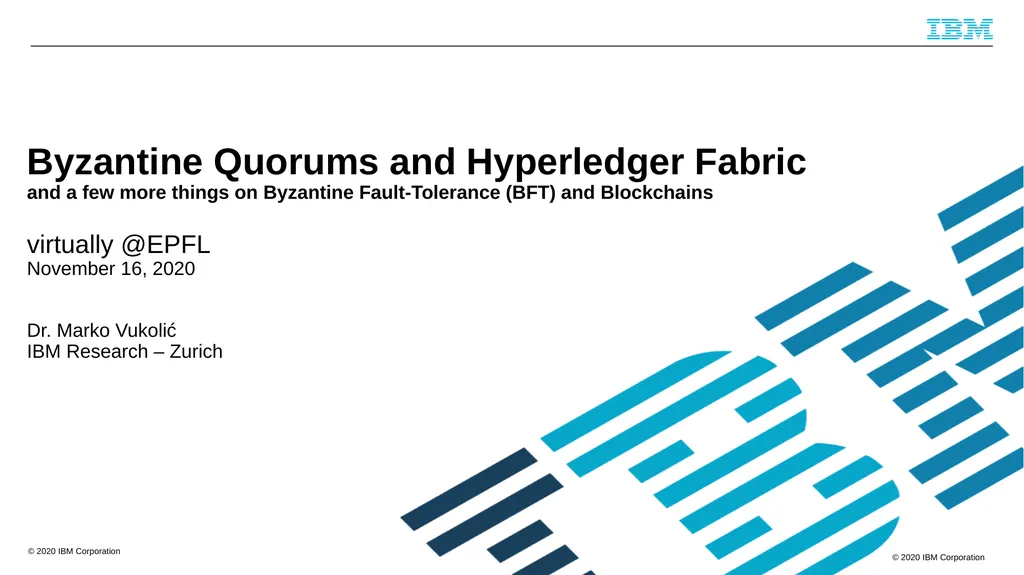
Author : phoebe-click | Published Date : 2025-05-14
Description: Byzantine Quorums and Hyperledger Fabric and a few more things on Byzantine Fault-Tolerance (BFT) and Blockchains virtually EPFL November 16, 2020 Dr. Marko Vukolić IBM Research Zurich Byzantine Fault Tolerance (BFT) 2 replica replicaDownload Presentation The PPT/PDF document "" is the property of its rightful owner. Permission is granted to download and print the materials on this website for personal, non-commercial use only, and to display it on your personal computer provided you do not modify the materials and that you retain all copyright notices contained in the materials. By downloading content from our website, you accept the terms of this agreement.
Here is the link to download the presentation.
"Byzantine Quorums and Hyperledger Fabric and a few"The content belongs to its owner. You may download and print it for personal use, without modification, and keep all copyright notices. By downloading, you agree to these terms.













